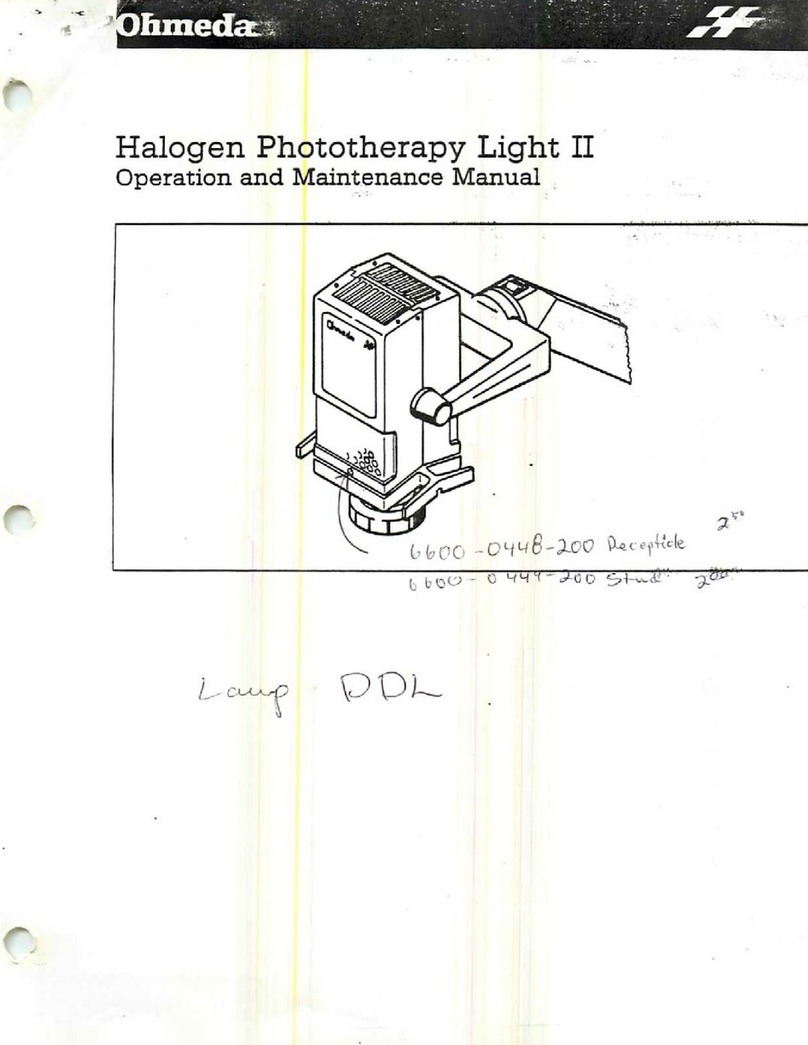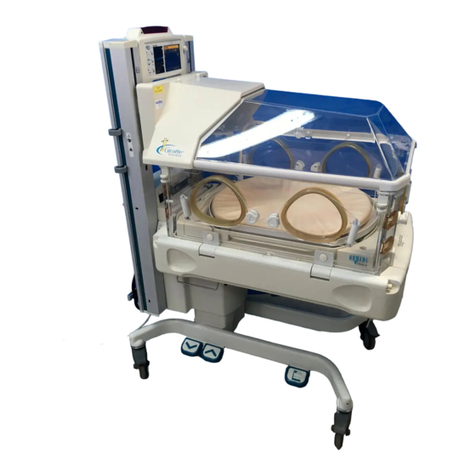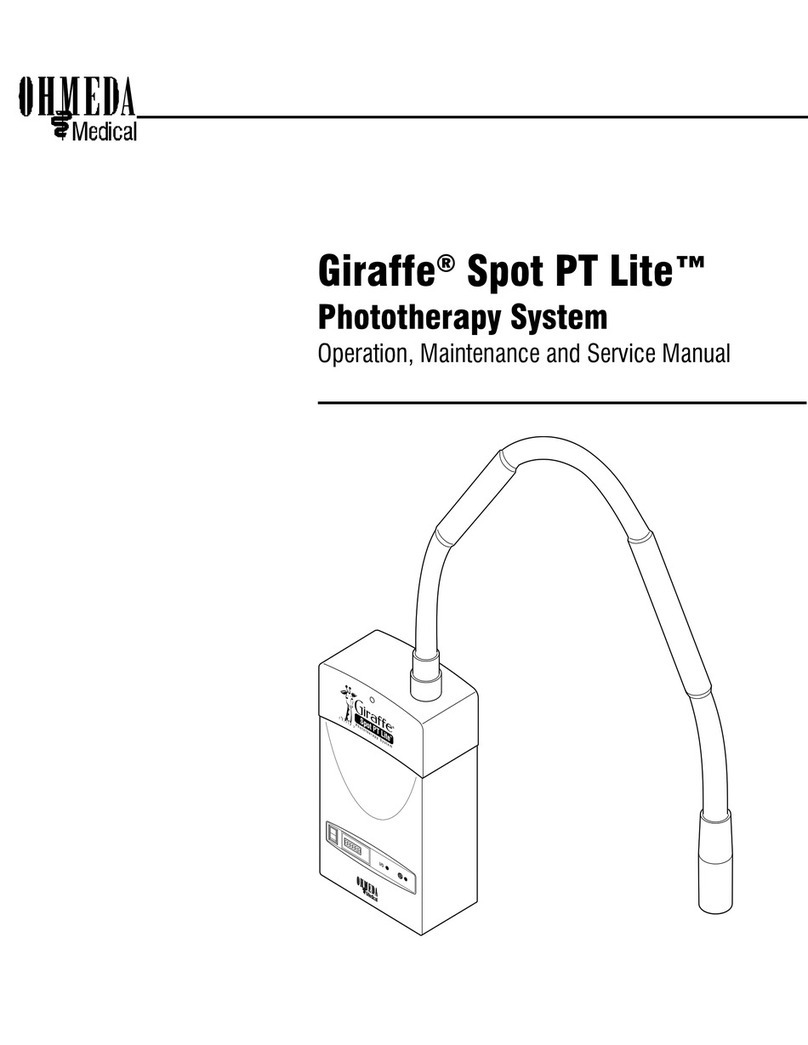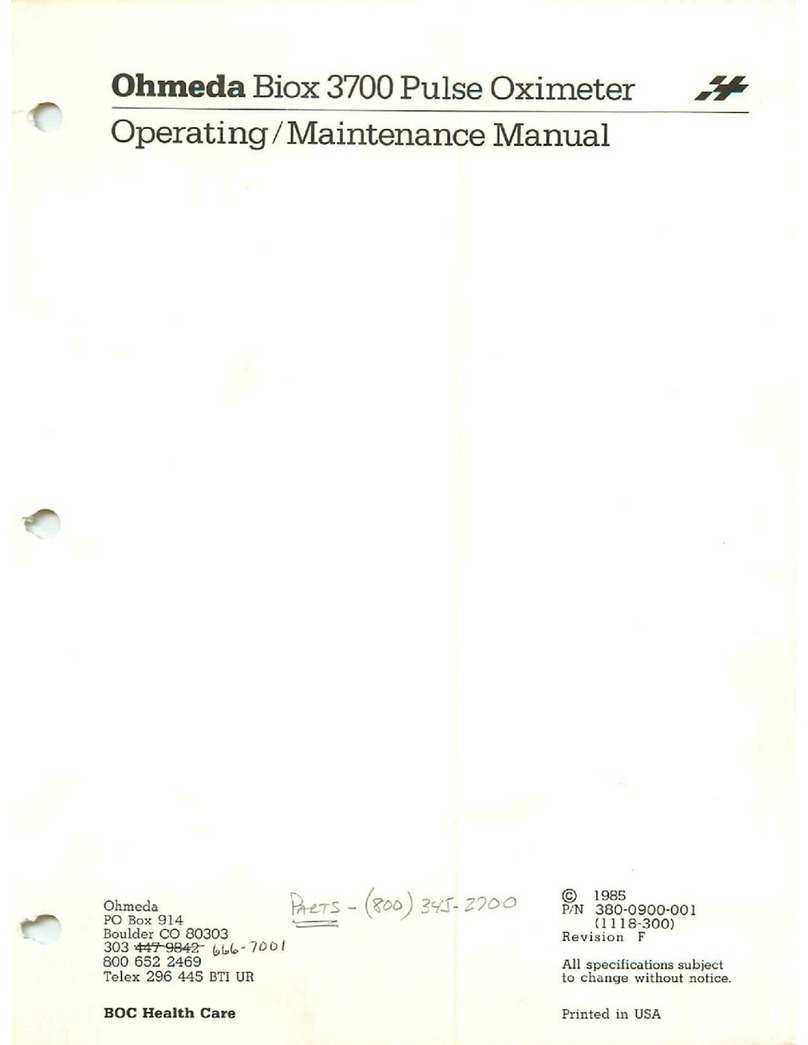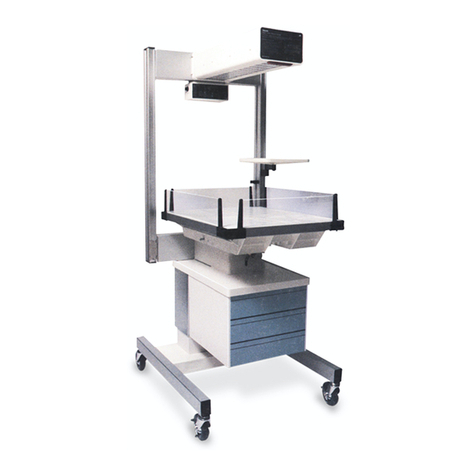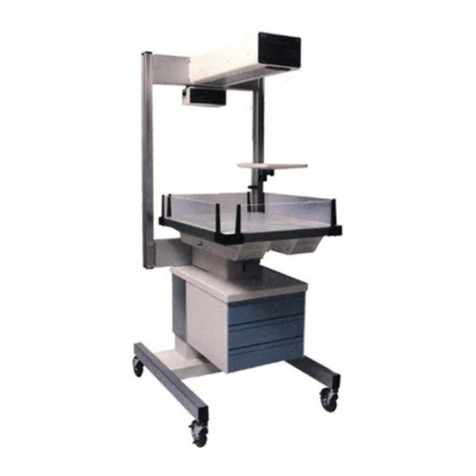
i i6600 0341 000 04/25/00
Table of Contents
1/General Information ..................................................................................................... 1
Description......................................................................................................................1
Light source controls, indicators and connectors............................................................4
Accessories and replacement parts................................................................................6
2/Operation ...................................................................................................................... 1
Checkout procedure before operation ............................................................................2
Checkout procedure...............................................................................................2
Using the BiliBlanket Plus High Output Phototherapy System .......................................3
Using the transilluminator ...............................................................................................6
3/Maintenance ................................................................................................................. 1
Maintenance schedule....................................................................................................1
Operator maintenance ..........................................................................................1
Service maintenance..............................................................................................1
Cleaning and disinfecting................................................................................................1
Bulb replacement............................................................................................................2
Cleaning the fan filter......................................................................................................4
Attaching the dovetail rail mounting bracket accessory..................................................4
4/Service .......................................................................................................................... 1
Repair policy and procedure...........................................................................................1
Troubleshooting ..............................................................................................................2
Functional description.....................................................................................................3
Repair procedures ..........................................................................................................4
Replacing a fuse ....................................................................................................5
Replacing the light source cover ............................................................................6
Replacing the PC board .........................................................................................6
Replacing the cooling fan.......................................................................................6
Replacing the brightness control............................................................................7
Replacing the power supply ...................................................................................7
Replacing the thermal cutout switch ......................................................................8
Replacing the optical filter assembly......................................................................8
Replacing the bulb holder ......................................................................................9
Replacing the power inlet module ..........................................................................9
Replacing a bezel/hour meter ..............................................................................10
Replacing a front bezel label................................................................................10
Electrical safety procedures..........................................................................................11
Ground continuity .................................................................................................11
Leakage current ...................................................................................................11
Light Output Measurement ...........................................................................................11
Illustrated service parts.................................................................................................13
Schematics ...................................................................................................................17
Appendix.......................................................................................................................... 1
Specifications..................................................................................................................1






